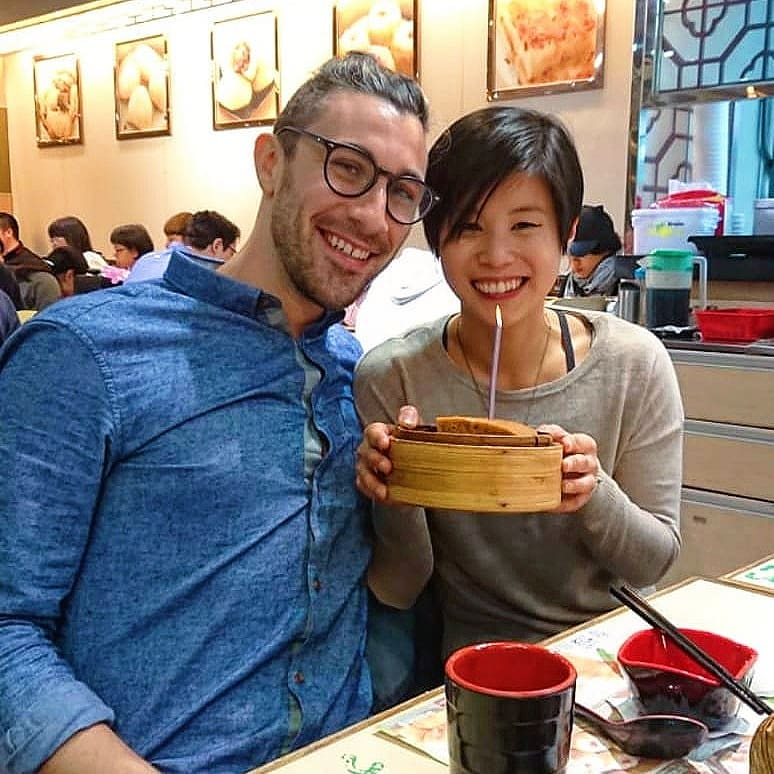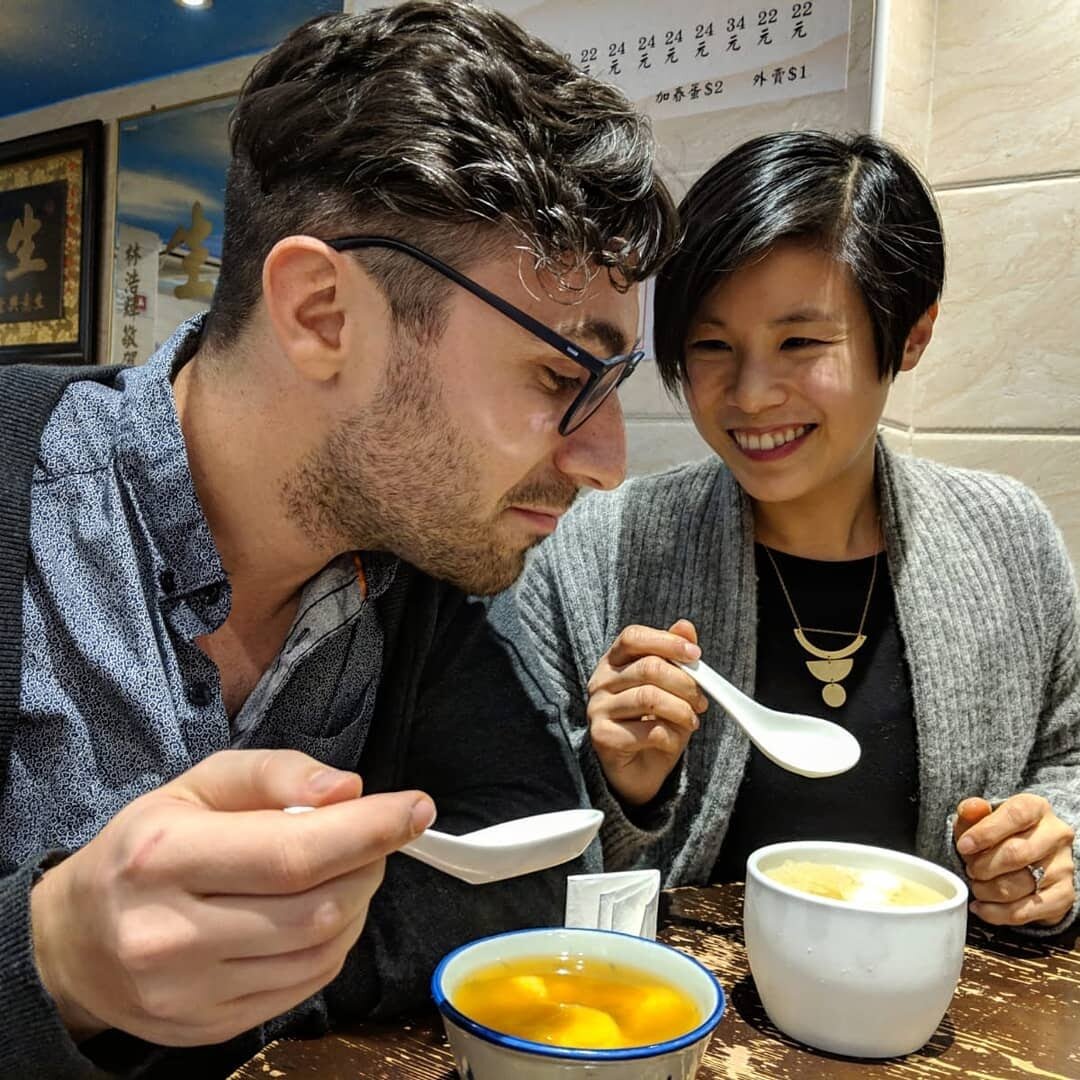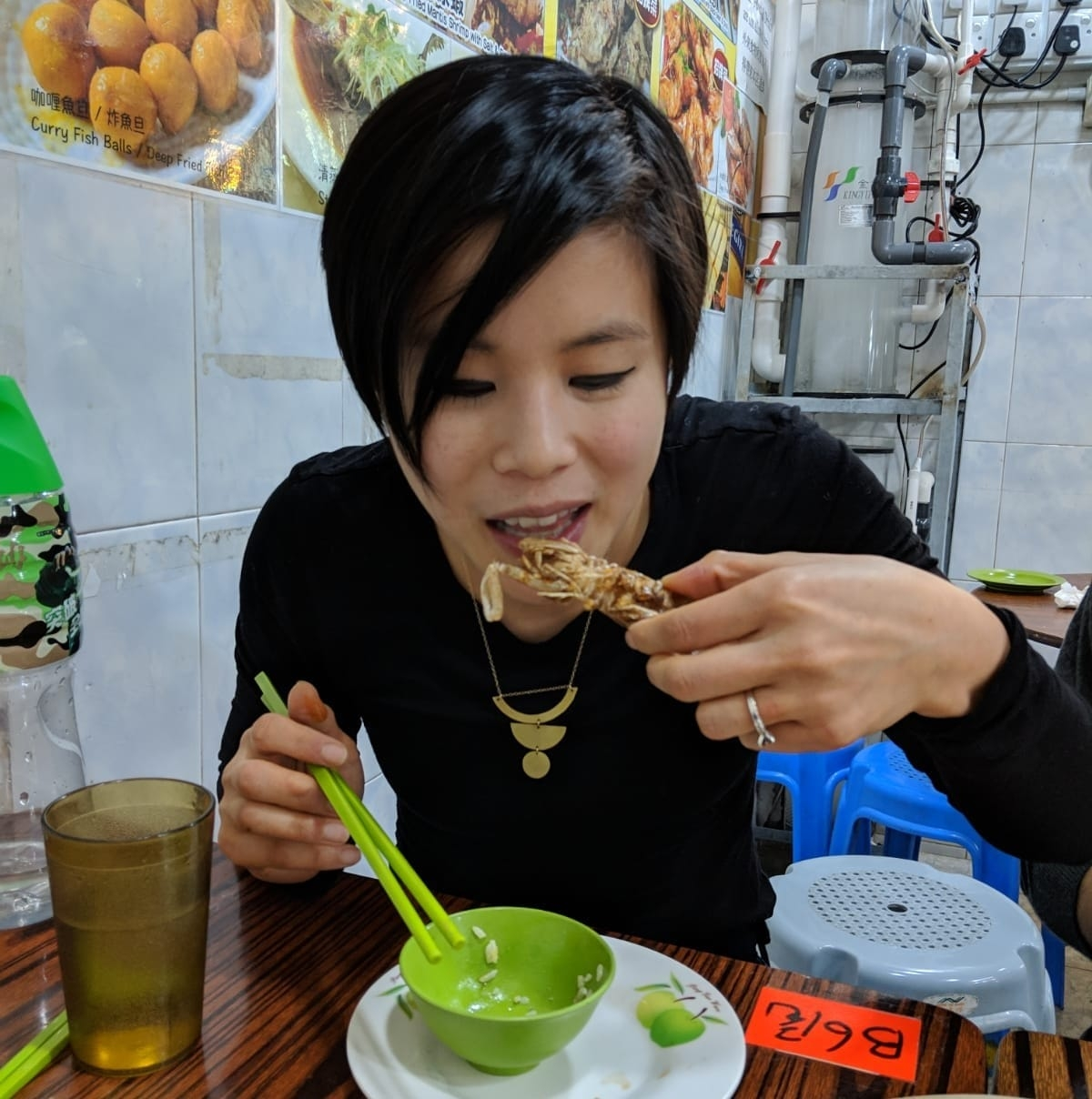This bun is emblematic of the hybrid food culture in Hong Kong because the filling is essentially a Western tuna salad, made by simply tossing canned tuna with mayo. As a result, ingredients in this recipe can all be easily found at any grocery stores abroad.
Because we had ground turkey left in the fridge, we improvised and made a curried turkey filling as well. The curried turkey version is inspired by samosas, originally from South Asia but are commonly found in local Hong Kong bakeries. Hong Kong has a sizable South Asian community because of the city’s colonial history.
This dish and variations of it is very common in Chinese home kitchens. Not only is it flavourful, it is also extremely easy to make. While I used ground turkey in this recipe because that’s what I had in the fridge, but the more traditional way is to use ground pork.
Dumpling-making is usually a familial activity among Chinese people. During Lunar New Year, families usually get together to make dumplings from scratch and eat it at the beginning of a new year to symbolize wealth.
Depending on regions and family traditions, the dumplings may take different shapes. They can be steamed, boiled, or pan-fried.
I was a very picky eater as a kid. Every night, my mother would try all her might to coax me into finishing my dinner--or at least a small bowl of rice and vegetables. The only time I would gladly comply was when she made soy sauce chicken. The sauce rendered the rice so flavorful that I couldn’t resist it.
I was a very picky eater as a kid. Every night, my mother would try all her might to coax me into finishing my dinner--or at least a small bowl of rice and vegetables. The only time I would gladly comply was when she made soy sauce chicken. The sauce rendered the rice so flavorful that I couldn’t resist it.
I am obsessed with Chinese sausage (laap cheung). I am also obsessed with making steamed buns. This recipe combines both of them for a flavorful, classic dim sum dish. This recipe is adapted from The Woks of Life.
Steamed laap cheung rolls is a classic dim sum dish that has become increasingly rare in restaurants. You can think of it as a more classic Chinese style of the Hong Kong hot dog b...
Like most Hongkongers, I am keenly familiar with the tomato and egg stir-fry. It’s a simple, cheap, and healthy dish that I have grown up eating. I never gave this humble dish much thought until my American partner Asher exclaimed how much he enjoyed this combination. Before meeting me, he had never had this dish.
I had some Chinese sausages in my fridge one night, and I decided to add that...
I was inspired to make this dish after getting a pack of thin pork chop on sale at the supermarket. It’s easy to overcook pork chop that thin. A quick pan-fry is the way to go. This is a quick Hong Kong classic that is both easy and flavorful. It goes well with a bowl of white rice.
My white American partner Asher had never had this dish before, nor had he tasted spiced salt....
YAM’s HK kitchen








My name is Sharon Yam. While I was born and raised in Hong Kong, I have been living in the US for the past 13 years--first in Pennsylvania, then in Wisconsin, and currently in Kentucky. Most towns I live in have very few Hongkongers, and so I have always tried to recreate a bit of home in my kitchen. My mother was an amazing home cook who improvised and made all kinds of cuisines when I was growing up. Since I now live far away from Hong Kong in places where there are very few Hongkongers, the kitchen is where I go when I feel homesick: I enjoy recreating flavors from my childhood, reinventing Cantonese classics with ingredients I can find in the US, and experimenting with totally new dishes.
My American partner Asher is also an avid home cook. While he currently works as a computer programmer, he spent a year cooking professionally at a high-end Southern restaurant in Lexington, Kentucky where we live. Our favorite activities as a couple include visiting different grocery stores and brainstorming what to cook for dinner each night. While I introduce Asher to various Chinese ingredients and recipes, he teaches me the French cooking techniques he had learned at the restaurant.
You will find some of my favorite recipes here--while almost all of them are inspired by my memories and palette as a Hongkonger, none of them is quite traditional. I hope you will join me in this culinary experimentation!
Measurements
1 cup = 250ml
1 Tbsp (tablespoon) = 20ml
1 tsp (teaspoon) = 5ml










I cannot get fresh whole fish where I currently live in the US. As a result, when I am craving fish, I often resort to salmon filet from the grocery store. Lately, I have been feeling bored with always pan-frying our salmon, and want to experiment with new ways of cooking.
I recall eating salted salmon filet as part of my breakfast when I was staying in a Bed-and-Breakfast in Tokyo. It turns out that this staple Japanese dish is very easy to make!